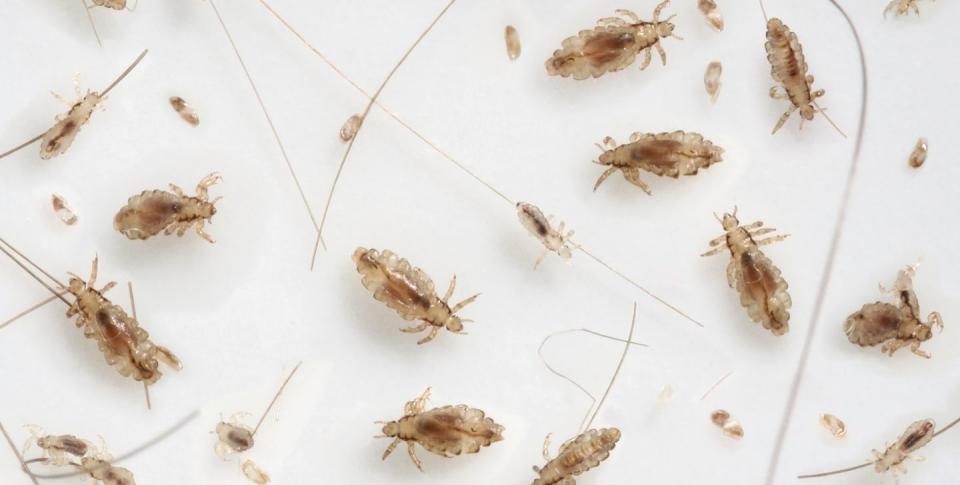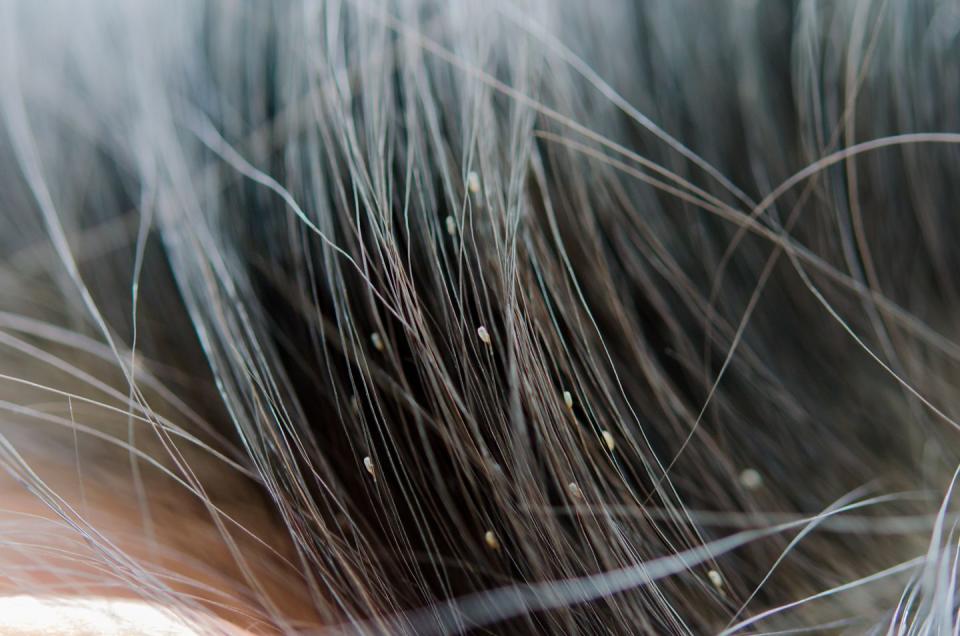Doctors Share the Most Effective Ways to Banish Lice from Your Body (and Home!)

Dealing with lice is like taking a master class in how not to freak out. After all, it’s hard to keep your cool when creepy, crawly insects that feast on blood have set up shop on your scalp.
In case you’re not overly familiar with them, lice are parasitic insects that can be found on people’s heads and bodies, meaning they survive by feeding on human blood. Lice have three stages: the nit stage, which is when they’re eggs, the nymph stage, which is when they’re tiny, and the adult phase, which is when they’re about the size of sesame seeds, according to the Centers for Disease Control and Prevention (CDC).
They can spread quickly, but most commonly impact children and their families. “Lice do not jump or fly but are otherwise easily spread from person to person through direct contact and sharing of hair tools and hats,” says John Brancato, MD, an emergency medicine physician at Connecticut Children’s. The result? A super-itchy scalp, a weird crawling feeling in your hair, and red bumps here and there.
Given how fast lice can move from person to person, it makes sense that you’d want to do your best to shut down a lice infestation ASAP. Luckily, there are methods out there to help, but some are more effective than others. Here, experts break down everything you should know.
How to get rid of lice on your body

There are a bunch of options out there, but these are the main ones to consider:
1. Reach for a medicated shampoo.
Over-the-counter shampoos designed to tackle lice work well for getting rid of them, says Ashanti Woods, MD, a pediatrician at Mercy Medical Center. They generally contain pyrethrins (pyrethroid extracts from the chrysanthemum flower) or permethrin (a synthetic pyrethroid extract). Both effectively kill live lice.
Rid and Nix are great examples of lice-killing shampoos you can find at the drugstore or online. You’ll want to be sure to follow the instructions on the packaging, but most products recommend letting the shampoo sit on the affected area for around 10 minutes, thoroughly rinsing, and following with a good combing.
2. Comb them out.
OTC medicated shampoos only kill live lice—not nits. That’s where a fine-tooth nit comb comes in, which can help pull out lice eggs that are clinging to hair. “Using a really good lice comb, combing through the hair, and getting all the nits out can be really effective,” says Gina Posner, MD, a board-certified pediatrician at MemorialCare Orange Coast Medical Center.
3. Consider certain home remedies.
You’ve probably read online that you can combat lice by smearing mayo or olive oil on your head to suffocate them, but Dr. Woods says that this method isn’t super reliable. “Results vary considerably,” he says.
Still, Dr. Posner has seen a lot of success with it when it’s combined with good nit combing. She recommends putting mayo or olive oil on hair at night, covering it with a shower cap, and rinsing it out in the morning with a mixture of half vinegar and half water. “I’ve had no patients who have tried this method come back to me for a prescription medication,” she says. If the natural route doesn’t work (or you simply don’t want to get messy), try the shampoos above or see your doctor.
4. Ask your doctor about a prescription.
If you’ve spotted lice, but can’t seem to get rid of them on your own, don’t hesitate to call your doctor about next steps. “We see this pretty often,” Dr. Posner says.
Some lice have developed a resistance to permethrin, so your doctor may recommend a stronger prescription medication like Natroba, Sklice, or Ulesfia. These drugs kill live lice and might also take out some nits in the process. “They work very well,” Dr. Woods says.
How to effectively banish lice from your home
You may also spot lice spray for furniture when you’re grabbing your lice arsenal at your local drugstore, but the CDC doesn’t recommend this since fumigant sprays can be toxic if you breathe them in or they’re absorbed through your skin.
Lice can live up to two days on inanimate objects, like your couch or your bed, Dr. Brancato says, so you’ll want to clean your house well. That includes washing your clothes and bedding in hot water and drying in high heat. It’s also a good idea to vacuum your home (particularly your floor and furniture) and soak brushes and combs in hot water for more than five minutes. The CDC recommends putting things that aren’t washable in sealed plastic bags for at least two weeks.
While the process can be annoying, the good news is that lice are not known to carry or transmit disease (like ticks and mosquitoes). Using the right treatments and taking some extra precautions to keep things clean can help stop the itching once and for all.
Like what you just read? You’ll love our magazine! Go here to subscribe. Don’t miss a thing by downloading Apple News here and following Prevention. Oh, and we’re on Instagram too.
You Might Also Like
